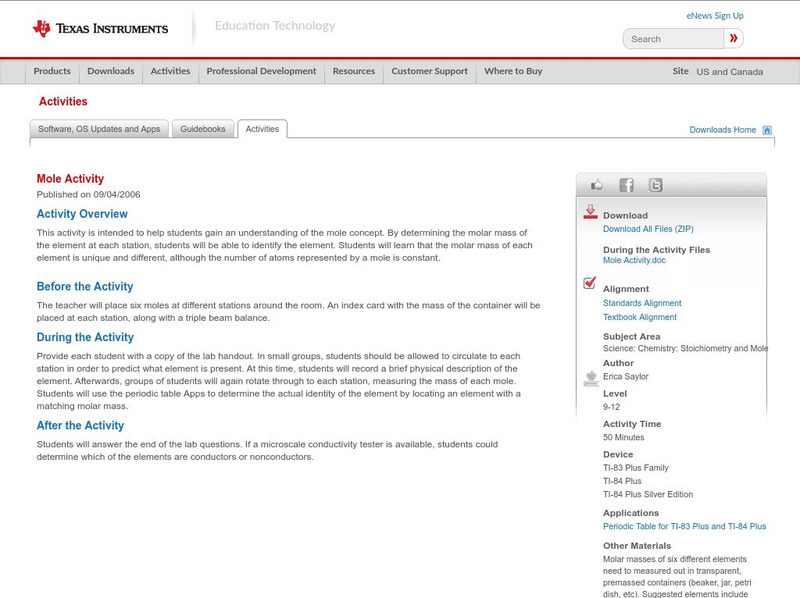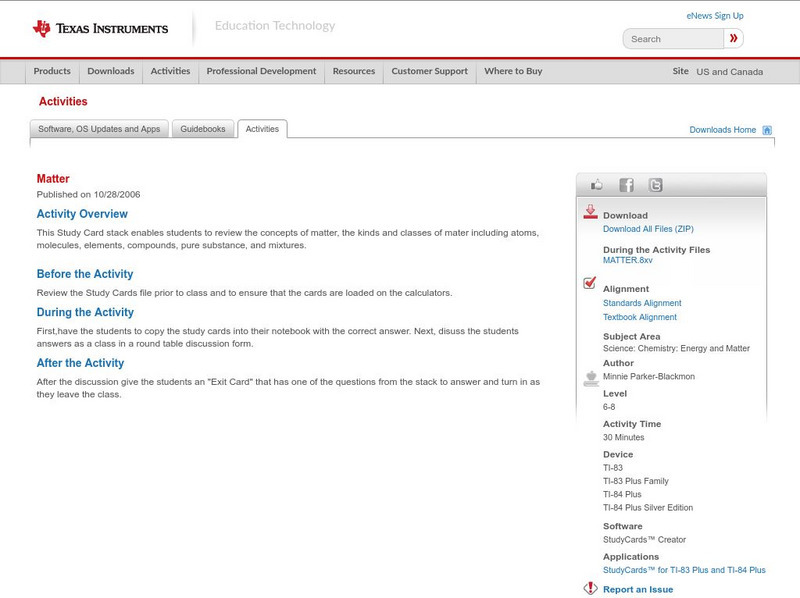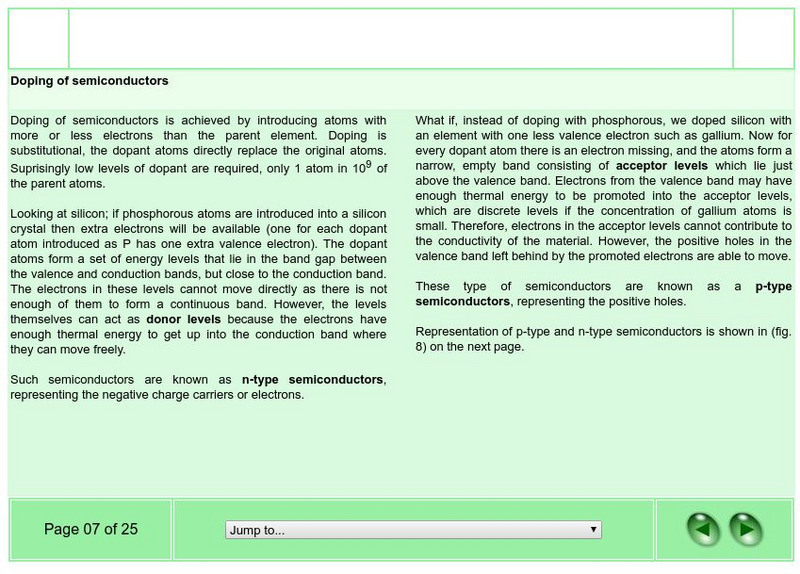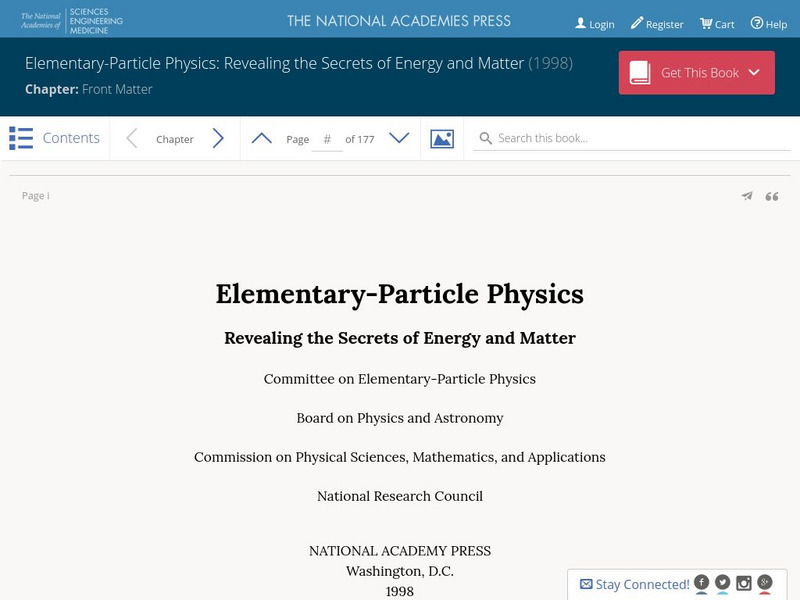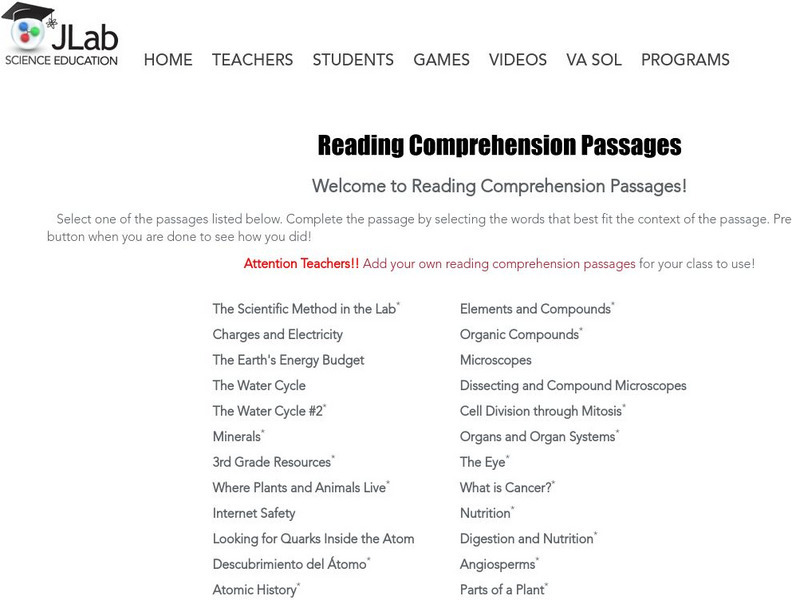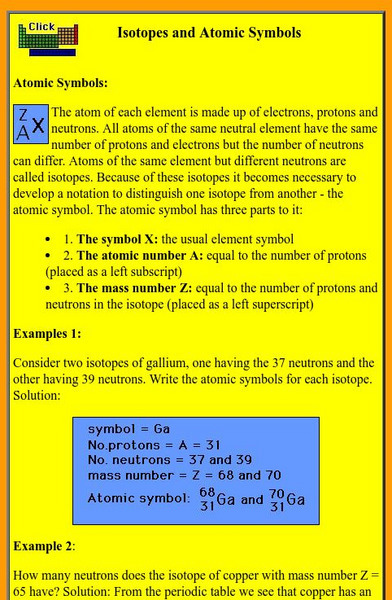University of Alberta
The University of Alberta: Nmr Spectroscopy
1HNMR theory begins in the nucleus of hydrogen. Complete this tutorial on the 1HNMR spectrum graph to learn about the number of equivalent hydrogens, b) the chemical environment of each hydrogen type and c) the number of neighbouring...
American Chemical Society
Middle School Chemistry: Finding Volume: Water Displacement Method
Students use the water-displacement method to find the volume of different rods that all have the same mass.
Texas Instruments
Texas Instruments: Mole Activity
This activity is intended to help students gain an understanding of the mole concept. By determining the molar mass of the element at each station, students will be able to identify the element. Students will learn that the molar mass of...
Texas Instruments
Texas Instruments: Matter
This Study Card stack enables students to review the concepts of matter, the kinds and classes of mater including atoms, molecules, elements, compounds, pure substance, and mixtures.
University of Oxford (UK)
University of Oxford: Solid State Chemistry: Doping of Semiconductors
Discover how the doping of semiconductors is achieved by introducing atoms with more or fewer electrons than the parent element.
Alabama Learning Exchange
Alex: Emission Spectrum
We will reintroduce the students to the electromagnetic spectrum and visible light. We will talk about the states of electrons(ground and excited). The teacher will show a video link (Electrons in Atoms). We will then perform the science...
National High Magnetic Field Laboratory
Magnet Academy: Enrico Fermi
Enrico Fermi was a titan of twentieth-century physics. He outlined the statistical laws that govern the behavior of particles that abide by the Pauli exclusion principle and developed a theoretical model of the atom in his mid-twenties....
Annenberg Foundation
Annenberg Learner: Isotopes, a Weighty Matter: Isotope Quiz
You will be presented with three different isotopes of the same element. See if you can calculate the atom's average relative mass.
University Corporation for Atmospheric Research
Ucar: Biogeochemical Cycles
The ways in which an element or compound such as water moves between its various living and nonliving forms and locations in the biosphere is called a biogeochemical cycle. All of the atoms that are building blocks of living things are a...
Sophia Learning
Sophia: Science Tutorial: Matter
Created to teach students of the 21st century, SOPHIA is bringing matter straight to your fingertips. Become the commander of your own learning experiences as you take part in this interactive tutorial. [1:02]
PBS
Pbs Learning Media: Meaning of Matter
Matter is all around us, so it's a good idea to know what it is, and why it matters. Learn about matter, its categories, and its subcategories with this interactive lesson.
Other
National Research Council: Elementary Particle Physics
The Committee on Elementary-Particle Physics, part of the U.S. National Research Council, presents this massive report on particle physics. It's a definitive document. Surprisingly readable, totally detailed. Start with the Table of...
Sophia Learning
Sophia: Characteristics of Matter
Find out the basic characteristics and main properties of all matter.
Sophia Learning
Sophia: Characteristics of Matter
A podcast tutorial describing the main characteristics of matter. [1:02]
Sophia Learning
Sophia: Valence Electrons and Core Electrons
Through a series of slide show presentations and a video lesson, strengthen your understanding of valence electrons. [2:46]
Quia
Quia: Silver
Play games to help you memorize information about the element silver. Play word seach, concentration and flashcards with questions about atom symbol, atomic number and more.
Ducksters
Ducksters: Kids Science: Molecules
Kid's learn about the science of the molecules. Tiny chemistry and compounds of atoms and elements make up all matter.
ClassFlow
Class Flow: Comparing and Contrasting Matter
[Free Registration/Login Required] This flipchart is a guided activity to help students compare different types of matter: atoms and molecules, elements and compounds, mixtures and solutions. It corresponds to Virginia science SOL 5.4.
Thomas Jefferson National Accelerator Facility
Jefferson Lab: Reading Comprehension Passages
Thirty-three cloze reading passages on various scientific passages including the scientific method, the water cycle, earth science, atoms, elements, cell division, body systems, and more.
Other
Science Alive: What Is Organic Chemistry?
This reading/lesson plan introduces young scholars to the concept of organic chemistry.
Other
Science Alive: The Many Faces of Steroids
This reading is an introduction to the great variety of steroids and their many different uses.
Science Struck
Science Struck: Explanation of John Dalton's Atomic Theory
Explains the basic tenets of Dalton's atomic theory.
Other
Chemistry 101 Notes: Isotopes and Atomic Symbols
These notes from a Chemistry 101 class at Indiana University Northwest provide a simple description of atomic symbols and two examples of how to use those symbols in isotope notation.
Other popular searches
- Atoms and Elements
- Science Elements, Atoms
- Atoms Elements Compounds
- Atoms and Chemical Elements
- Atoms Elements and Compounds
- Chemical Elements Atoms
- Candy Atoms and Elements
- Science Elements Atoms
- Atoms Elements
- Atoms Molecules Elements
- Atoms of Elements
- Science Elements and Atoms




